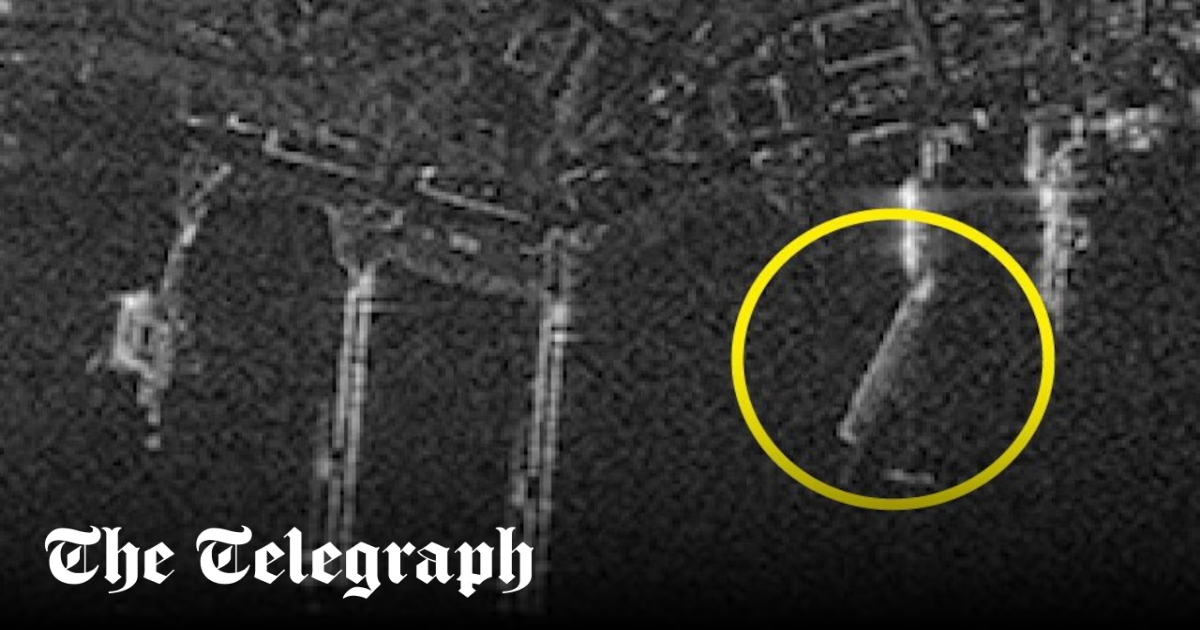Russia’s far east nuclear submarine base appears to have been damaged by the tsunami that swept the country’s Pacific coast on Wednesday, according to satellite imagery obtained by The Telegraph.
The waves, triggered by an 8.8 magnitude earthquake, hit the Rybachiy base in Kamchatka peninsula, which houses most of the nuclear submarines in Russia’s Pacific Fleet.
A section of one pier has bent away from its original position, possibly indicating that it was detached from its moorings, images taken by the Umbra Space satellite on Thursday morning have revealed.
It does not appear that a submarine was moored alongside at the time of impact and experts said damage to the structure alone would have little military significance.
However, questions were raised about whether the tsunami caused any further harm to the base, which was thought to have been hit within 15 minutes of the earthquake.

The nuclear submarines housed there, including newer Borei-class craft and Soviet-era Deltas, are the closest to the US aside from those on forward deployment.
Rybachiy sits inside Avacha Bay, around 75 miles west from the earthquake’s epicentre. Also in the bay are the Petropavlovsk-Kamchatsky naval base, and separate missile-loading and shipyard facilities.
Footage recorded elsewhere on Russia’s eastern coast showed waves up to five metres high swamping the shore.
Heavy damage can be seen in the port of Severo-Kurilsk, around twice as far from the earthquake’s epicentre as Avacha Bay.
In satellite photographs taken on July 17, a submarine can be seen moored at the pier that now appears to have been damaged. In both sets of imagery, a surface ship is moored on the western side of the pier.
Umbra Space uses Synthetic Aperture Radar (SAR) satellites, which can penetrate the cloud cover that has prevented other systems from gaining a clear picture of the tsunami’s impact on Rybachiy.
Dr Sidharth Kaushal, a research fellow at the Royal United Services Institute (Rusi), said that there was no sign of any damage to the submarine fleet.
“It looks like it was a surface ship that was moored at the pier rather than a submarine, which is noteworthy,” he said.
“I’m not sure we can really ascertain more than that a pier was damaged, [which] I suspect probably won’t change the tempo of activity [at the base] much at all.”
The pier has been left at a “terrible angle”, said Tom Sharpe, a retired Royal Navy commander, which would make it awkward for a ship to enter or exit. There appears to be a tugboat by the tip of the twisted section, he added, which could be involved in initial repairs.
“If the base assumption is that a wave got in there and bent that jetty then yes, what else did it do?” Mr Sharpe asked.
Submarines could be damaged by smacking hard into their moorings and water could enter open hatches or access points.
In separate Umbra imagery shared online, two submarines can be seen still moored at their piers after the tsunami. Boats undergoing maintenance would be particularly vulnerable to powerful waves, unable to set sail and escape.
However, experts stressed there was no sign of damage to the craft and the piers used by nuclear submarines are designed to withstand seismic impacts.
Dmitry Peskov, the Kremlin’s chief spokesman, said the “earthquake resistance” of buildings and functioning alert system had ensured there were no casualties across Kamchatka.
A retired Russian navy officer, who told the War Zone website he had not heard of any serious harm to Rybachiy, said: “These bases were designed and built with the possibility of a nuclear attack by the enemy in mind.”
The facility would have been shielded somewhat by the geography of the bay.

Even minor damage to the base, however, has led some to question whether Moscow is wise to harbour so many of its Pacific Fleet assets in a single location.
“This is why having multiple bases is a good idea, because you never know when you’re going to get rogered by something you haven’t seen coming,” said Mr Sharpe.
The Russian navy might also reconsider the construction standards of the apparently damaged pier. While the other nine at the base are built entirely out of concrete, a lengthy top section of that one appears to be a floating extension.
“It looks classically Russian,” Mr Sharpe said. “Taped on.”
